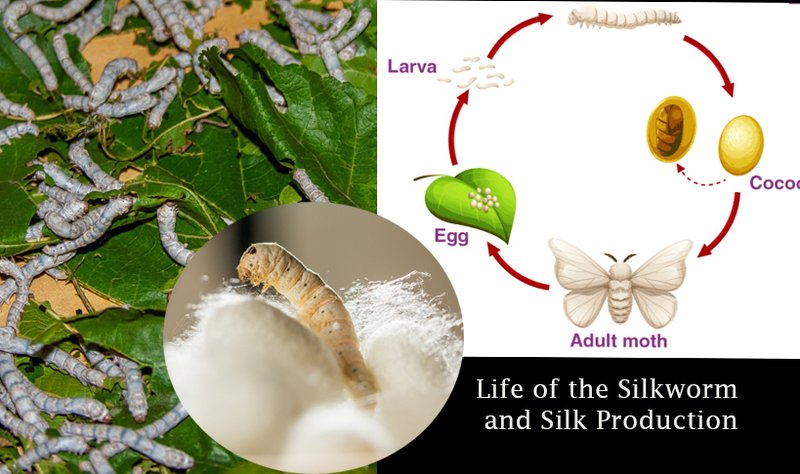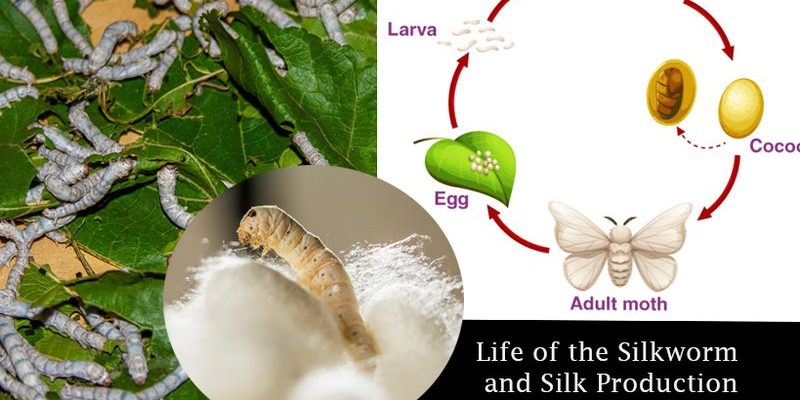
Imagine sitting down with a steaming cup of tea, and your friend starts telling you a story about how a worm—yes, a worm—has been responsible for beautiful silk garments worn by emperors and fashionistas alike. Silkworms, particularly the Bombyx mori species, have been cultivated for thousands of years to produce silk, a material that has captured the hearts of many. Let’s dive into the world of silkworms and see how these small but mighty creatures shaped the textile industry throughout history.
Understanding Silkworms: Nature’s Little Fabric Factories
Silkworms are the larvae of the silk moth, and they have a unique ability to spin silk threads from proteins in their bodies. Picture this: a larva munching on mulberry leaves, growing rapidly, then creating a cocoon that’s so tightly woven it can eventually produce over a thousand meters of silk thread. It’s like nature’s own weaving machine!
You might be wondering how anyone thought to use silkworms for textiles in the first place. It all started in ancient China around 3000 BC when a Chinese Empress is said to have discovered silk while tending to her mulberry trees. By observing a silkworm spinning its cocoon, she found that the delicate strands could be unwound and used to create fabric. This remarkable discovery launched an entire industry.
The process of cultivating silkworms, known as sericulture, became an essential part of Chinese culture. As demand for silk grew, so did the practices around breeding and harvesting these little critters. It’s not just about high fashion; it’s a full ecosystem revolving around these tiny worm factories!
The Silk Road: A Pathway for Trade and Culture
Fast forward a few millennia, and the impact of silkworms was no longer contained to China. The Silk Road, an ancient network of trade routes, played a massive role in spreading silk and silkworm technology across Asia, the Middle East, and eventually Europe. Imagine merchants traveling thousands of miles, carrying silk treasures that spoke volumes about wealth and prestige.
Silk quickly became a symbol of status in many cultures. It wasn’t just about wearing something nice; it was a statement, a luxurious badge of honor. European royalty went crazy for silk, importing huge quantities and often featuring intricate designs that showcased their power and wealth. In many ways, silk was more than just fabric; it was a medium through which culture and beauty were articulated.
However, the journey of silk was not a simple one. Silk was so valuable that its secret was fiercely protected for centuries. Punishments for revealing how to cultivate silkworms were severe, keeping the art and science of sericulture closely guarded by the Chinese. This mystery added to silk’s allure, making it even more desirable across the globe.
Silkworms in Textile Production Today
Today, the influence of silkworms can still be felt in the textile industry, albeit with some changes thanks to modern technology. While some silk is still produced through traditional sericulture, large-scale silk production often employs more efficient methods, including synthetic alternatives. Nevertheless, the exquisite quality of natural silk remains unmatched.
In contemporary textile production, silk is often blended with other fibers to enhance its durability and affordability. This is where you see silk-satin blends or silk-wool mixes making their way into high-end fashion. Honestly, those combinations can yield some gorgeous results! You might find silk used in everything from luxury clothing to high-quality home furnishings.
Beyond fashion, silkworms are being studied for their potential in sustainability. Silk is biodegradable and can be produced with less environmental impact compared to synthetic materials. As consumers grow more eco-conscious, silk may regain its popularity, not only as a luxurious fabric but as an environmentally-friendly choice.
Challenges Facing Silkworm Cultivation
Despite the illustrious history of silkworms, there are challenges in silk production today. Climate change and the spread of diseases among silkworm populations can threaten silk quality and availability. Moreover, competition with cheaper synthetic fibers often puts pressure on traditional sericulture practices. It’s a bit of a balancing act!
Farmers and scientists are actively looking for solutions to protect silkworms and ensure their viability. This includes research on breeding more resilient varieties of silkworms and developing sustainable farming practices. Such innovations could help keep this ancient craft alive while meeting modern demands.
Additionally, ethical concerns about animal welfare in sericulture have emerged. Most silk production involves killing the pupae to harvest the silk, prompting discussions around cruelty-free alternatives. Some companies are exploring “peace silk,” which allows the moth to emerge from its cocoon before the silk is collected. It’s a fascinating evolution of how we consider production methods.
Silkworms may be small, but their impact on textile history is monumental. From their humble beginnings in ancient China to becoming symbols of luxury and status, these little creatures shaped not just the fashion industry but also cross-cultural exchanges that have lasted for centuries.
The story of silkworms is a reminder of how intertwined our lives are with nature and how a single species can influence industries, cultures, and even economies. As we move forward, finding ways to sustainably embrace silkworm cultivation will ensure that their legacy continues for future generations. Whether you’re wearing a silk blouse or simply appreciating the beauty of silk fabrics, remember the tiny creatures that made it all possible.

